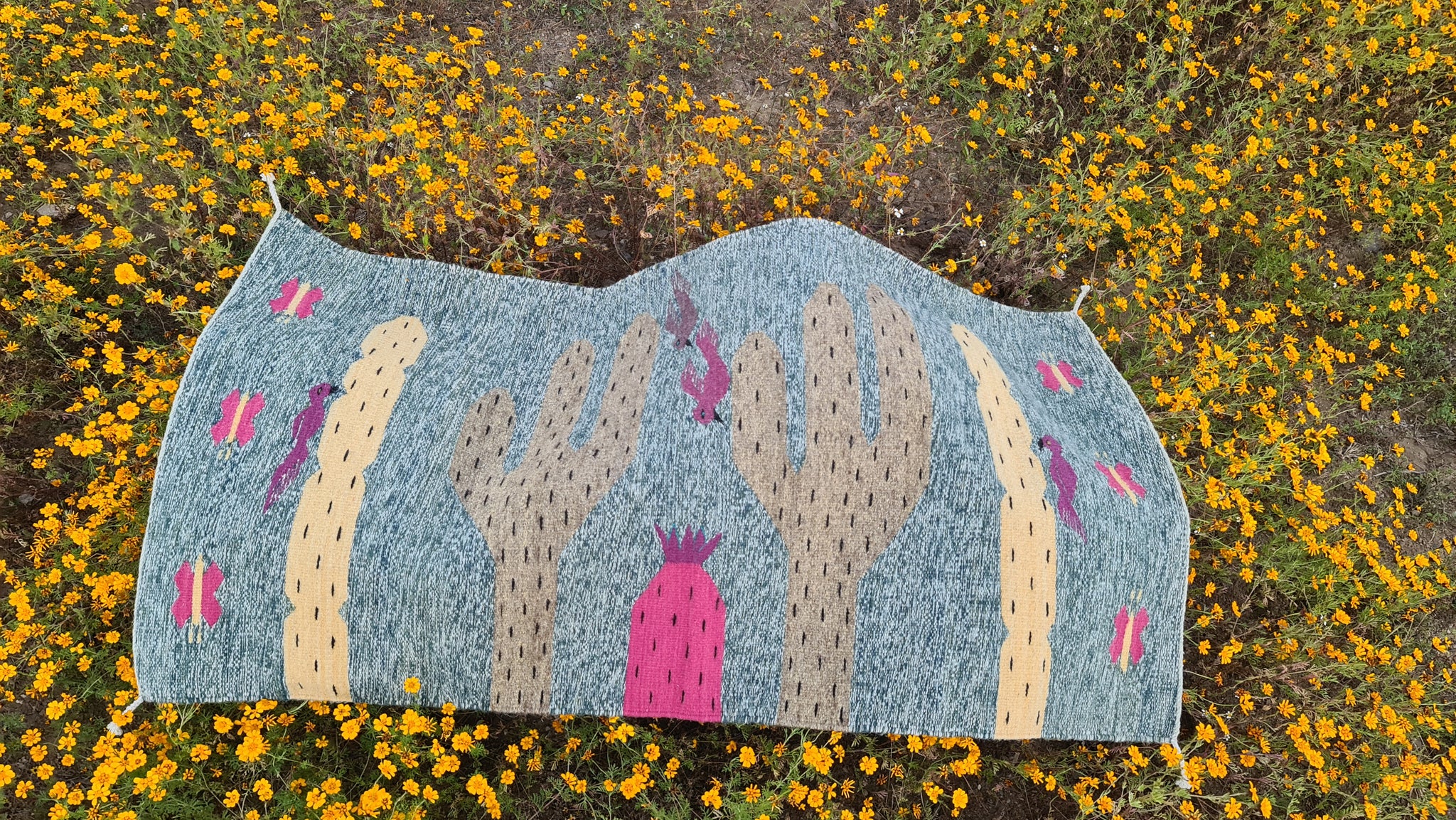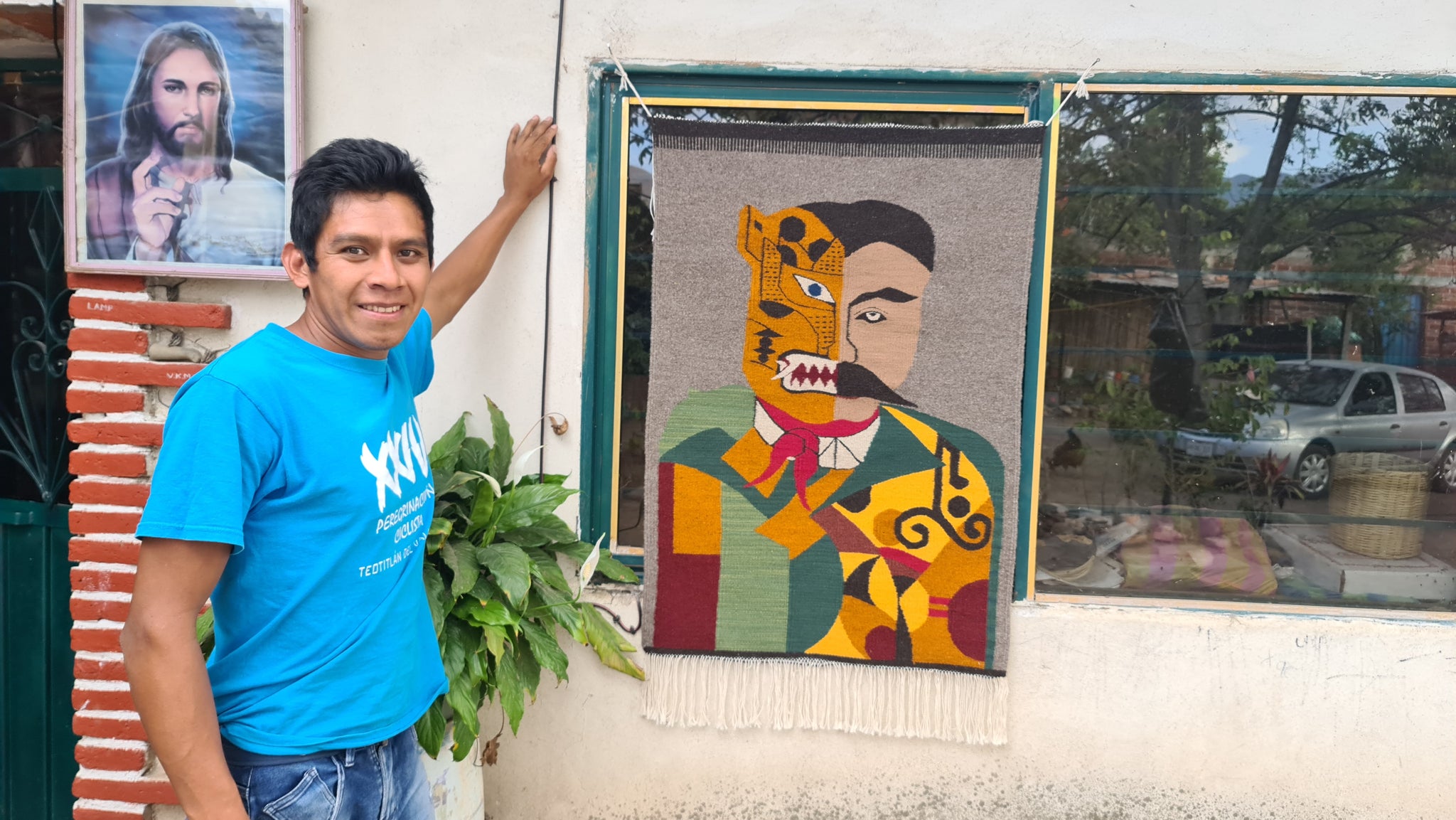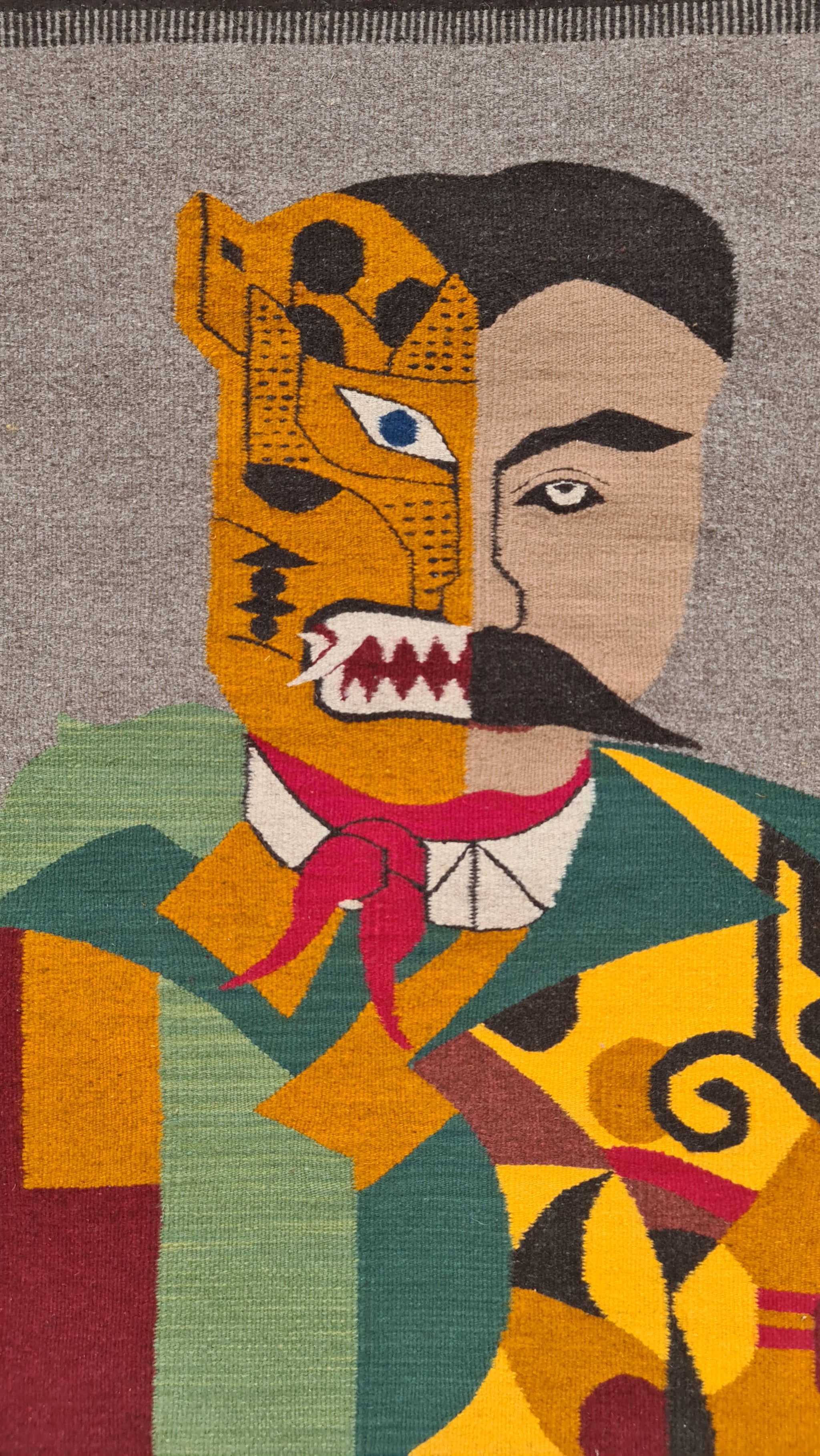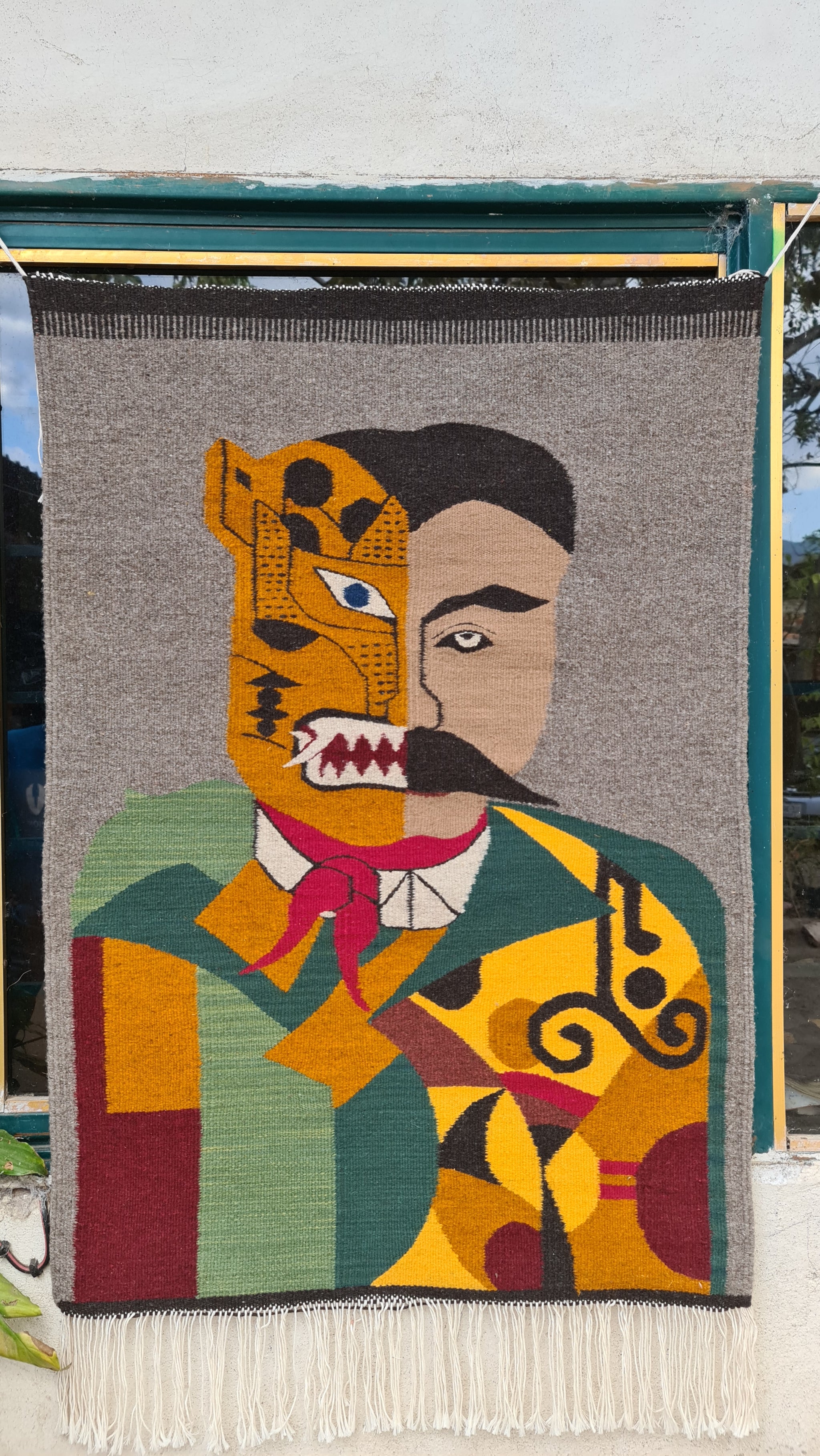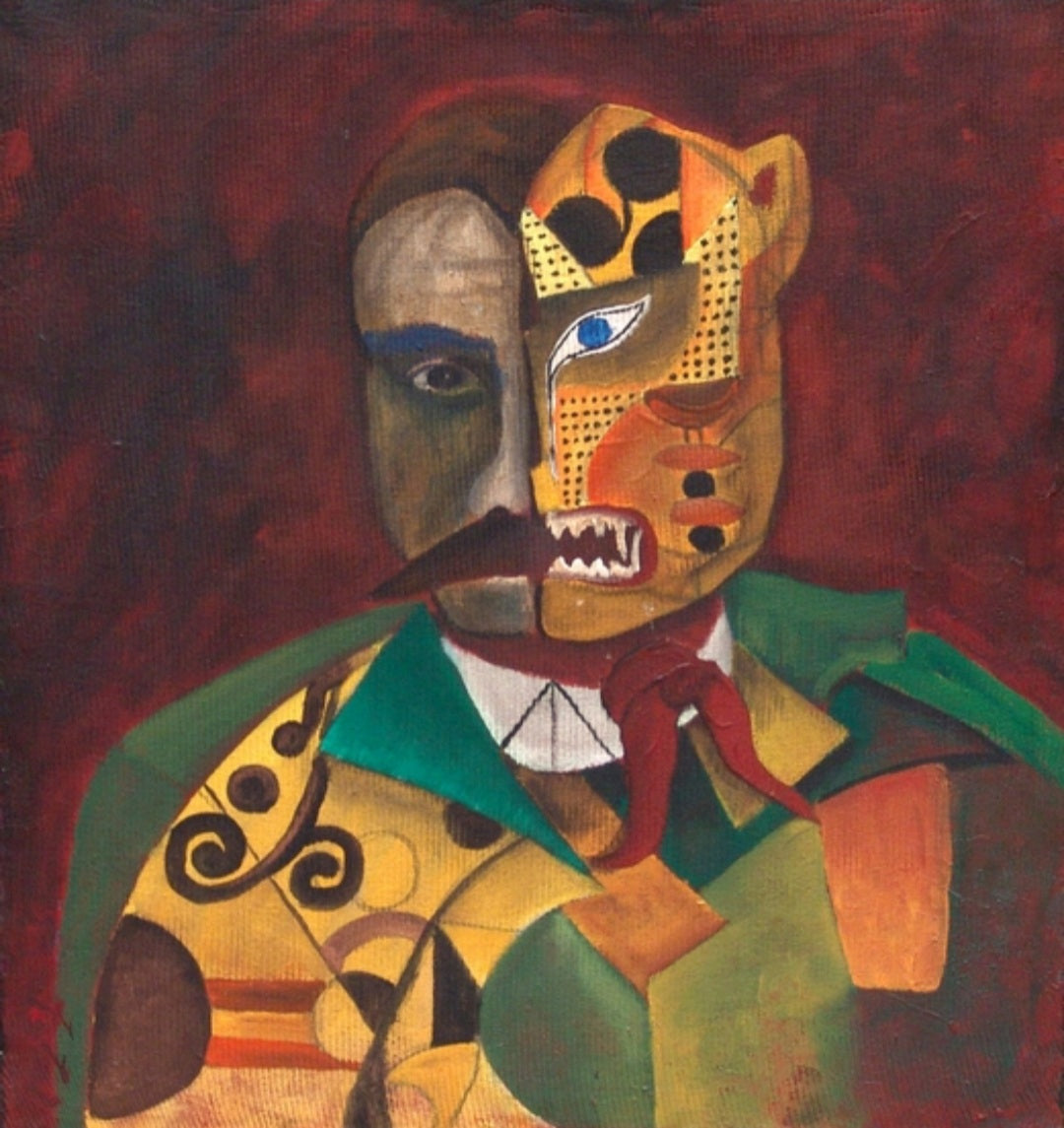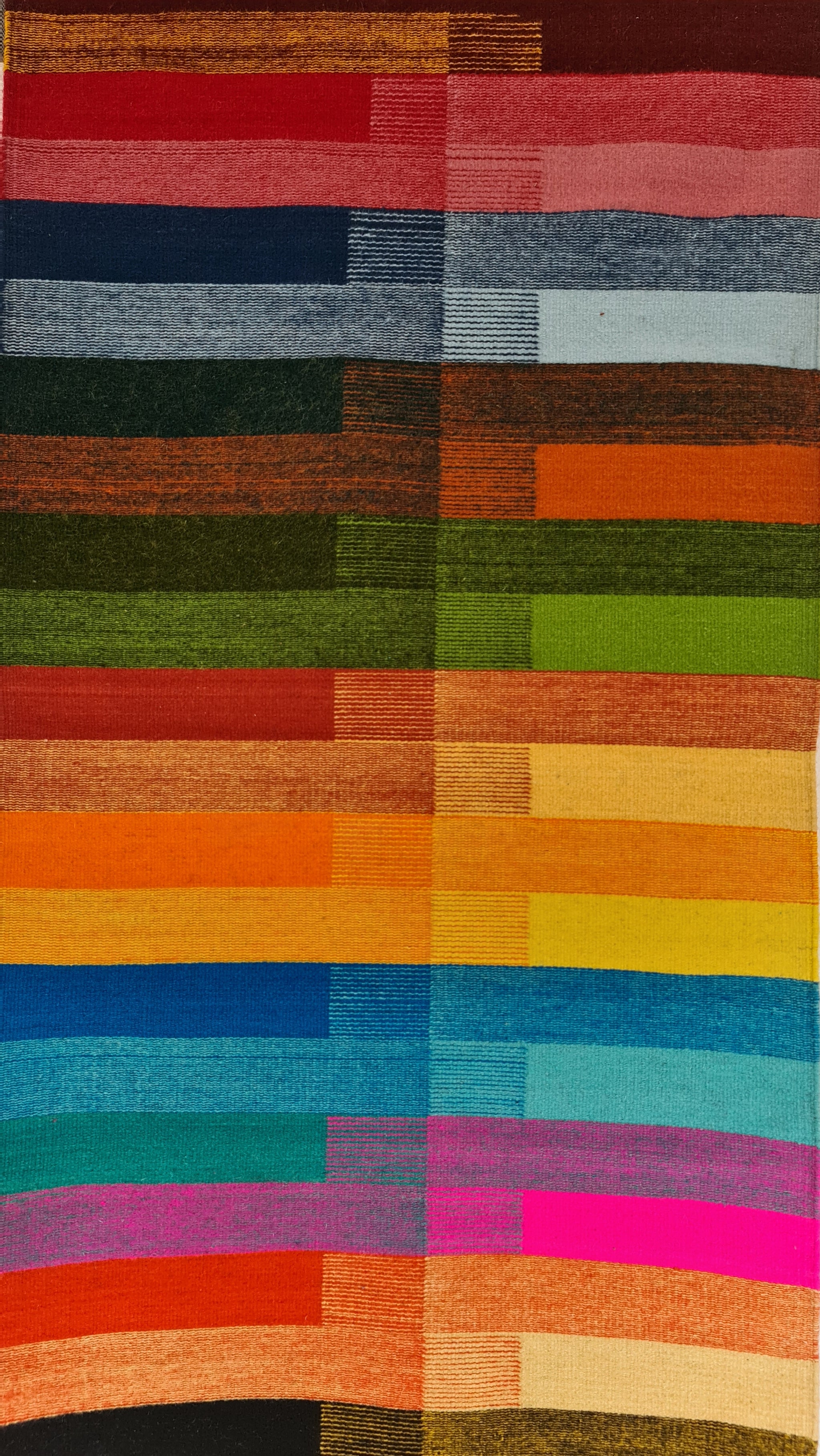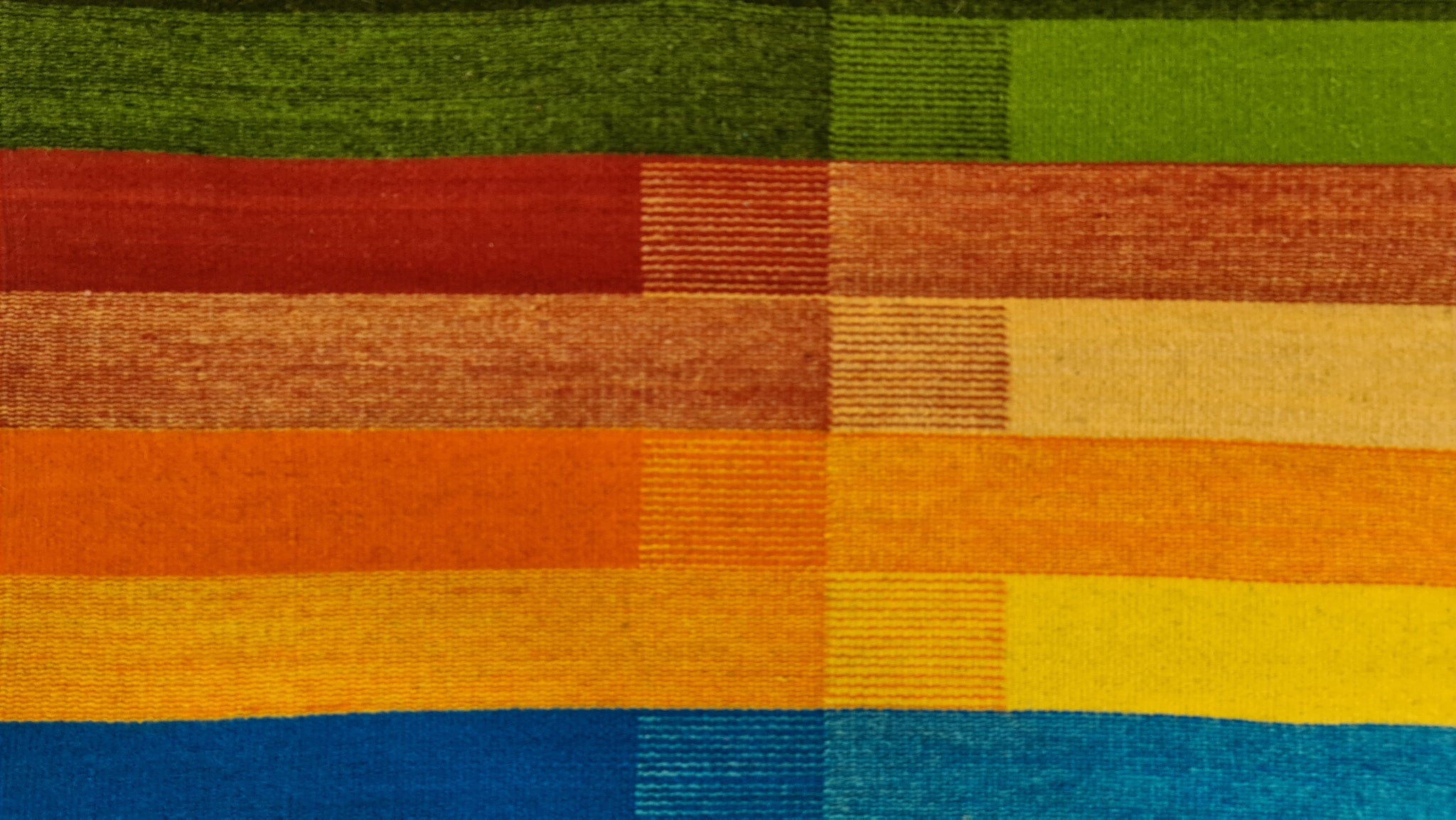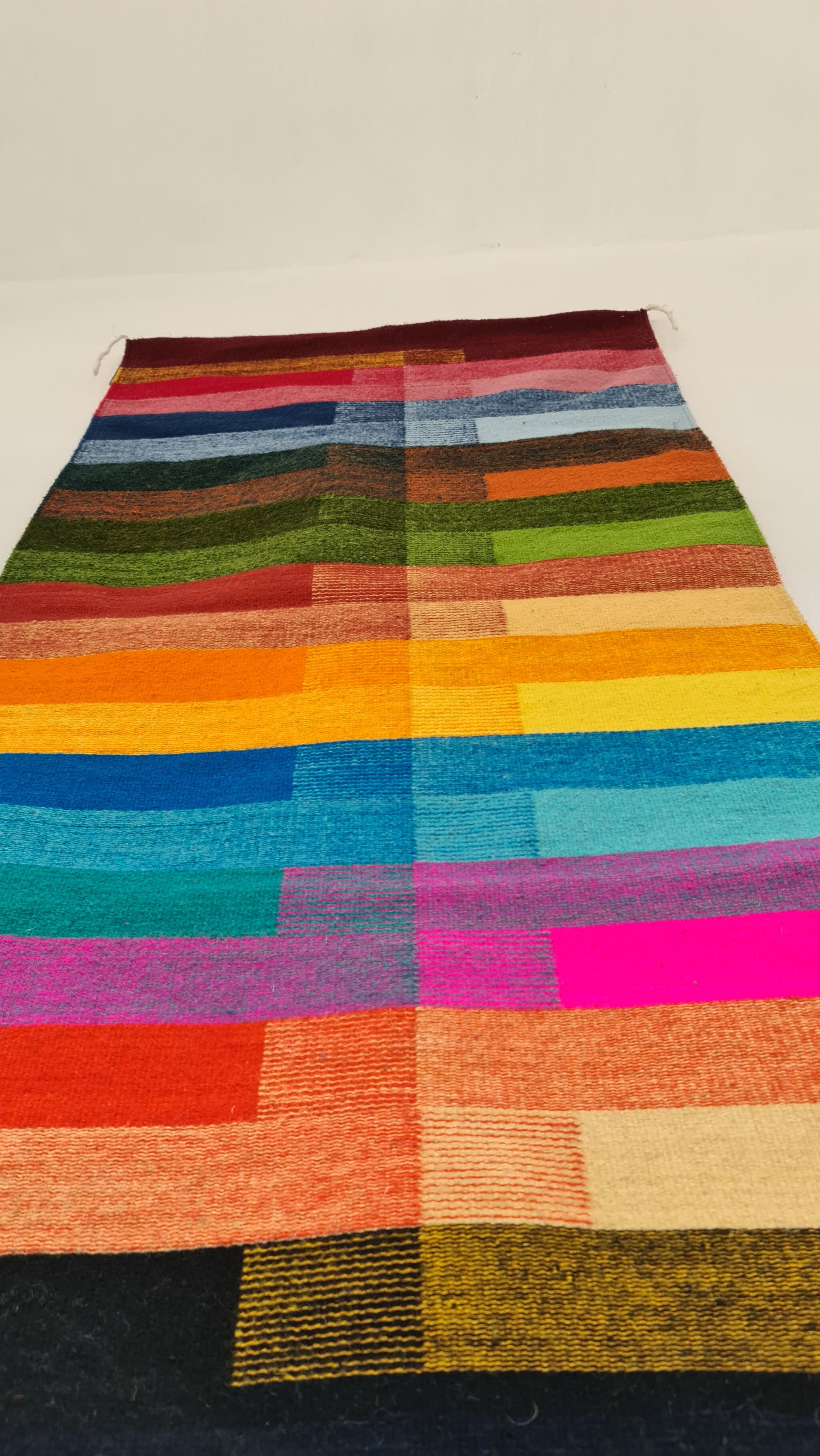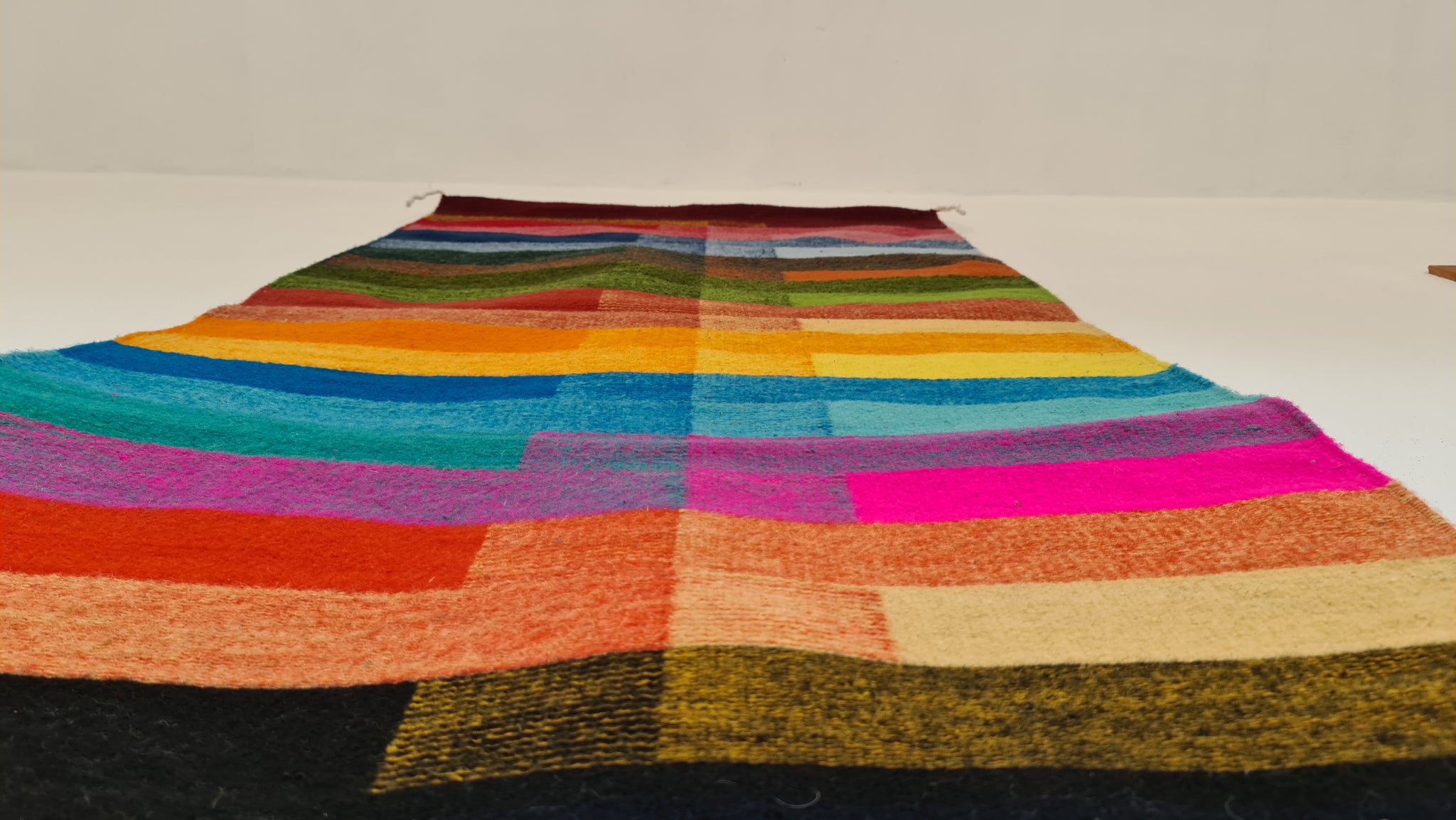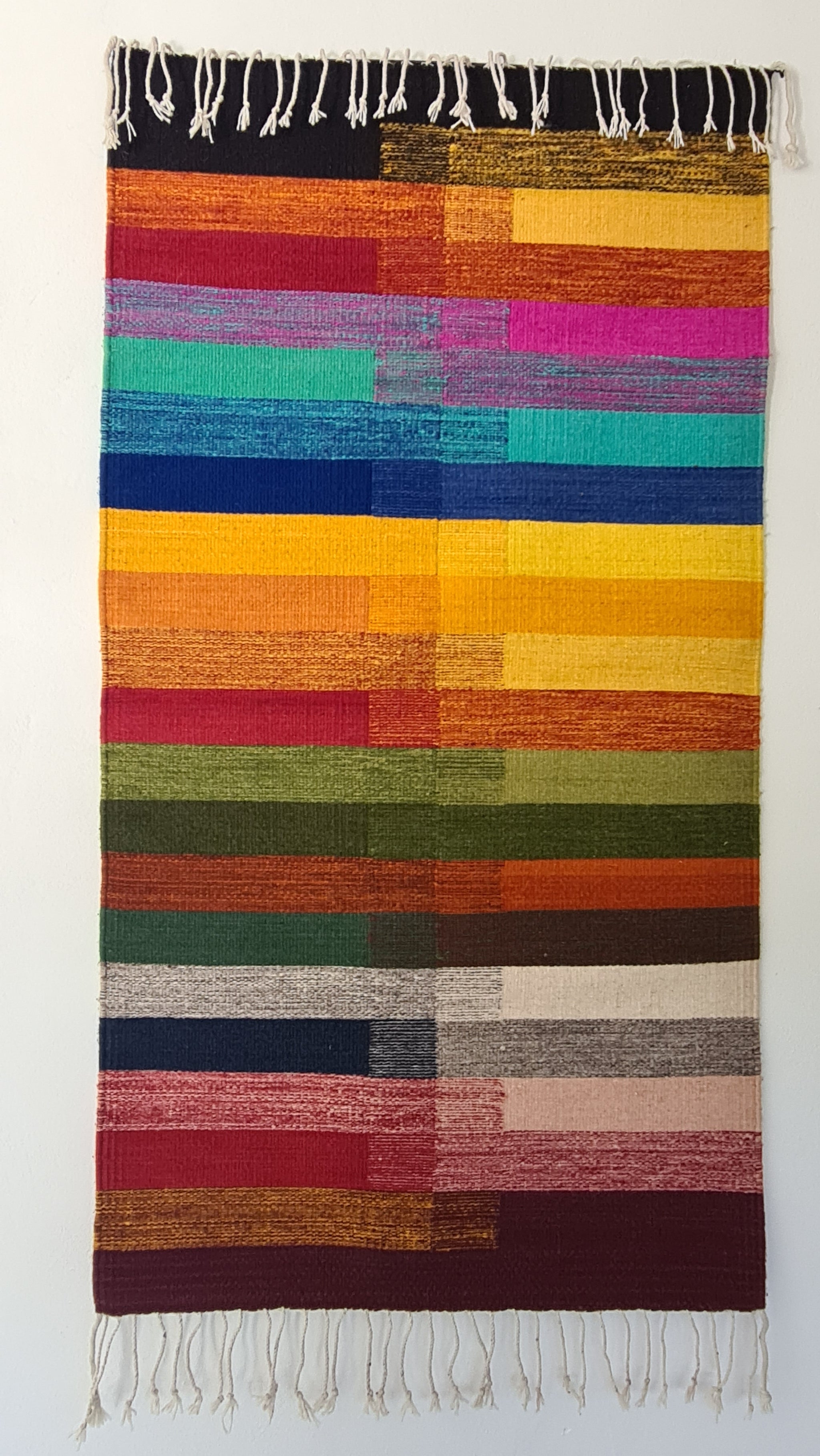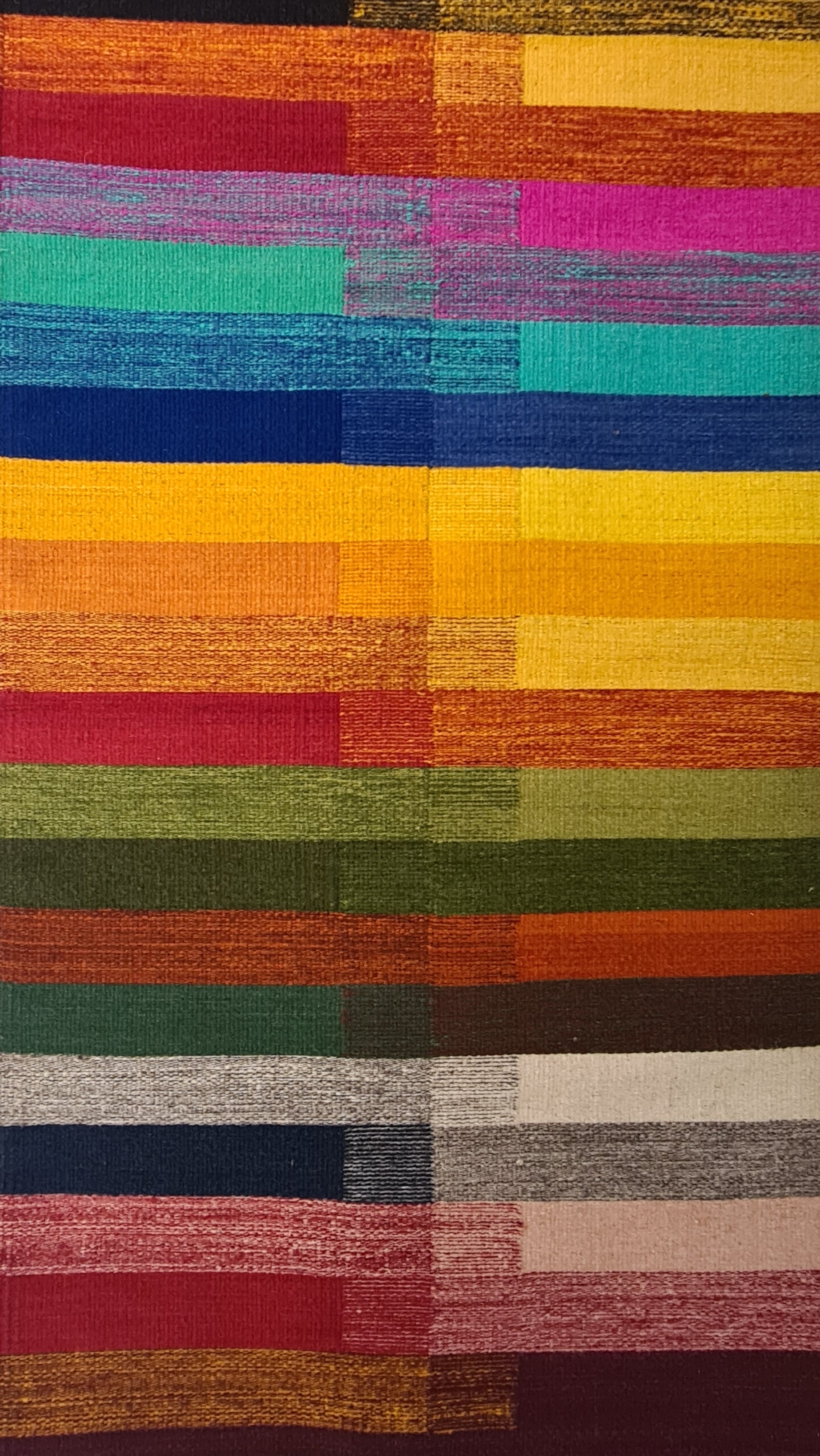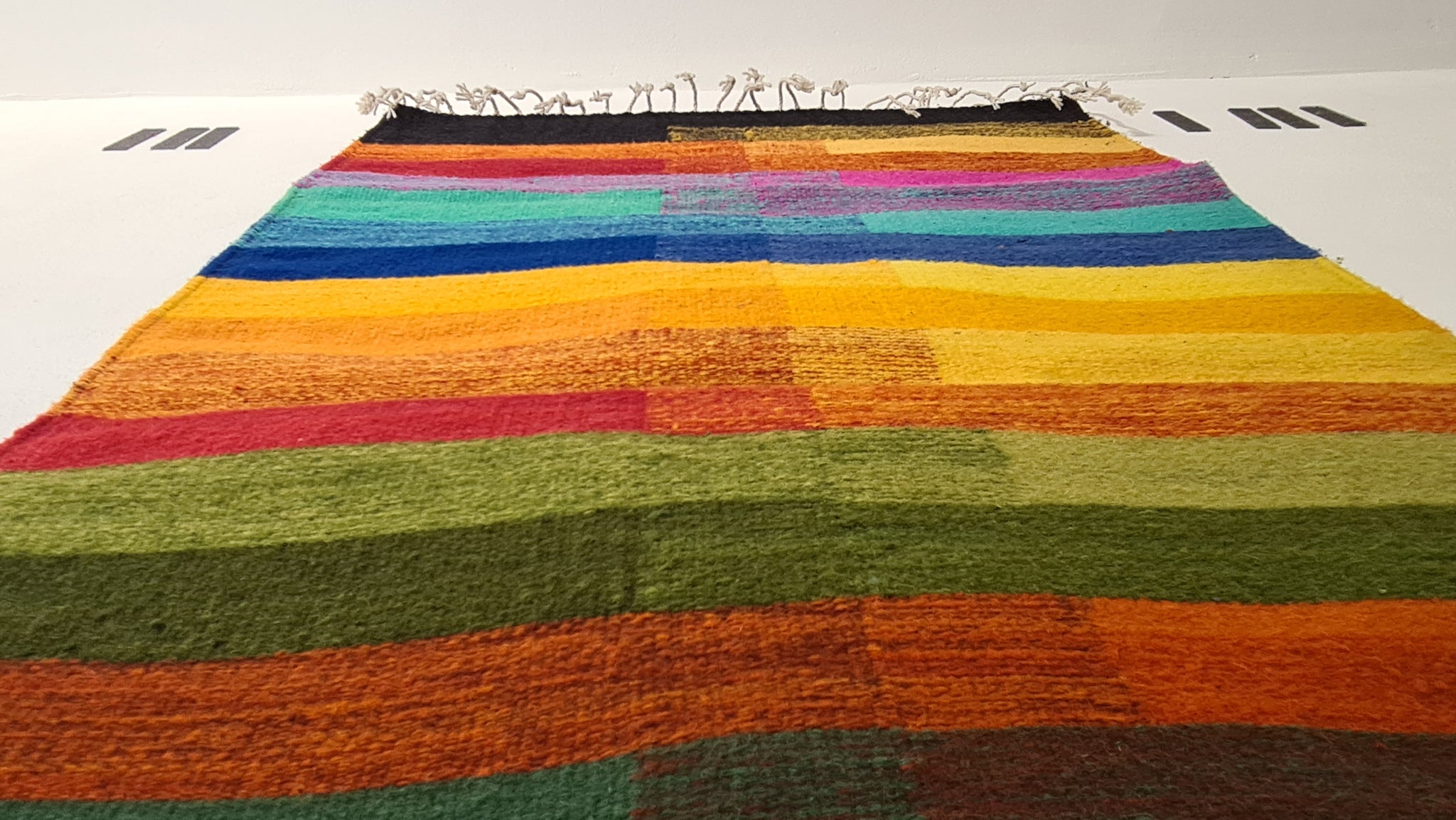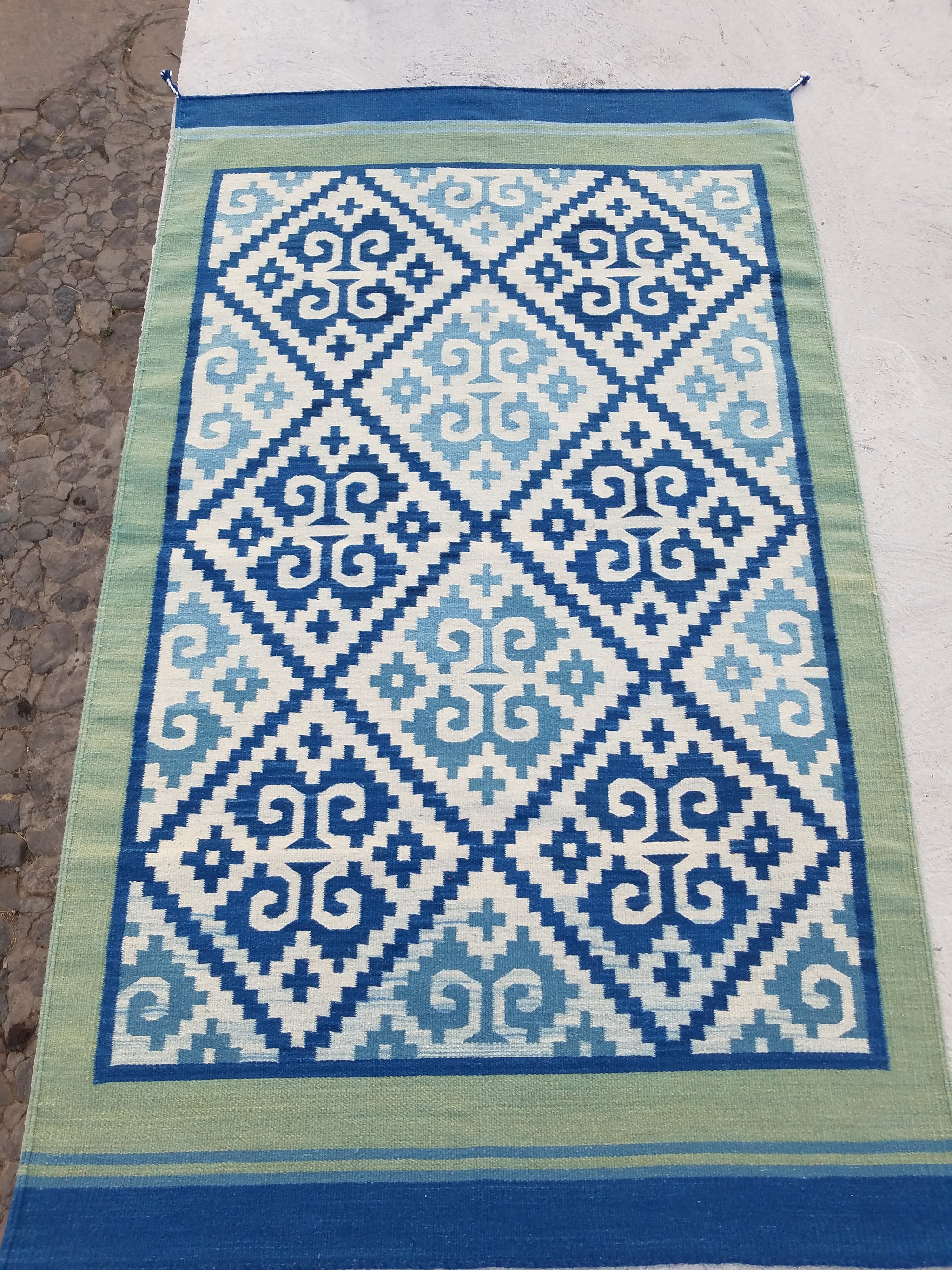Size: 80x150cm; 2.6x5ft
Weaver: Dionisio de San Miguel del Valle
Materials and methods: criollo sheep wool hand dyed with natural dyes: Bèé (cochineal), Yagshi[i (seep willow) and Xiuhquilitl (indigo) . Handwoven on a Zapotec style loom of the 16th century adapted from European styles. Woven using a 7 threads per inch reed and wool rayon blend for warp.
Design, patterns and symbols.
Samuel Bautista Lazo sketched this design in 2014 depicting the cacti richness of the foothills of Xiguie'a (Teotitlan del Valle) where his people herd their love stock. After día de muertos on November 1st it is very rare to have rain until the ocassional thunderstorm rains of late May and the proper rainy season starting mid June; life here in the central valley is very resilient, it has found ways to survive for 7 months with almost no rain. Perennial plants have deep roots and ways to conserve water, prickly thorns are the norm to keep herbivores at bay. Ben'zaā people here also have deep roots in the ground, having been here since the last Ice melt , they have learnt how to live with the energy flows of the seasons. We plant corn during the rainy season and we eat a lot of bía'a (nopales, prickly pear cactus) during the dry season; they are the green gold of these lands. Our ancestors domesticated many types of cacti to be more palatable and tastier, we cultivate in our gardens two types of thornless cacti that does not reproduce on its own anymore, they are thick and round and perfect for making soups with avocado leaves. We have a tall lanky nopal that produces tasty leafs, perfect for grilling, tacos and soups. Cacti gives us fruits like the common tuna (cacti fruit), or the pitaya (organ cacti fruit) or the more exotic pitahaya (dragon fruit). As we enter the era of climate chaos, cacti will prove to be a reliable source of food and many derivative products. Startups across Mexico are developing innovative products from cacti, leather, fuel and bio-plastics. Once upon a time the humble cacti also played a role in protecting the native people on these lands, besides poking the extremities of fowl invaders, the nopal produced cochineal, a bug that makes the best natural pigment in the world. Because our people had the know how and a vast network of production and distribution of cochineal, many tows were left relatively undisturbed as long as the kept producing the extremely sought after red dye from the "new world".
This rug is a homage to the resiliency of the land and its native people. The cacti are covered in seeds of life, as long as a cacti can survive the dry spells of the earth, it will produce seeds to repopulate the earth when the conditions are benign again. We choose to use a blend of two yarns for the background to emulate the starry nights that can be seen in deserts. There are butterflies that help polinize some cacti and wood peckers that build their nests in them and help spread their seeds. A balance of the give and take relationship.

